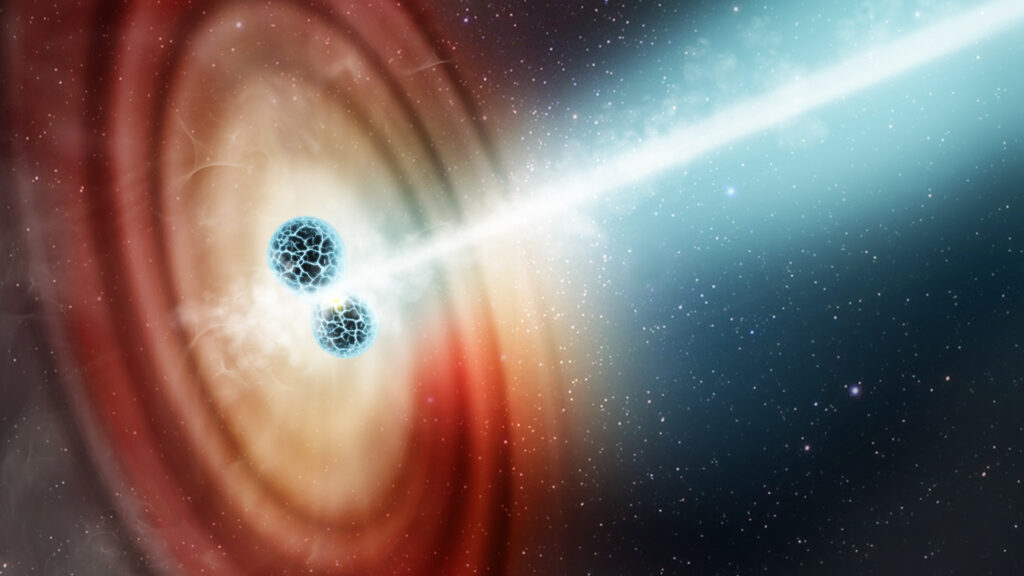Using the Hubble telescope, a team of American astronomers made unique observations of a jet formed during the collision of two neutron stars. Measurements showed that its speed was 99.97% of the speed of light.
Collision of two neutron stars
In August 2017, the LIGO Observatory recorded a gravitational wave surge. The event was designated GW170817. Thanks to the fact that LIGO was able to establish the approximate coordinates of the burst, astronomers around the world aimed at this part of the sky. In total, about 70 ground-based and space-based observatories took part in the study of GW170817.

Observations allowed us to determine the source of the surge. It was located in the galaxy NGC 4993, 130 million light-years away from us. The event was caused by the collision of two neutron stars. In real time, astronomers saw the process of synthesis of heavy elements predicted by theorists, including gold and platinum, and confirmed the correctness of the hypothesis about the nature of short gamma-ray bursts accompanying such events. It was also possible to determine that the collision of neutron stars led to the formation of a stellar-mass black hole.
Faster than the speed of light?
The Hubble telescope also took part in the study of GW170817. Astronomers wanted to find out how matter behaves in the vicinity of a newly formed black hole.
Observations have shown that an accretion disk has formed around the black hole, consisting of the matter of dead neutron stars. Part of its matter was absorbed by the hole, and part was thrown out in the form of polar jets. In the course of subsequent measurements, in which, in addition to Hubble, radio telescopes were also involved, astronomers were able to record a curious phenomenon. The apparent speed of the black hole jets exceeded the speed of light by seven times.
But this superluminal motion is nothing more than an illusion. Since the jet is approaching us at near-light speed, its later radiation remains a shorter distance to Earth. In fact, the jet is chasing its own light. In fact, more time passes between the emission of light by the jet than the observer thinks. This leads to the fact that the speed of the object is overestimated — in this case, it seems that it exceeds the speed of light.
Subsequently, astronomers were able to calculate the real speed of the jets. It is 99.97% of the speed of light, which is also an extremely impressive indicator.
According to https://www.nasa.gov
Follow us on Twitter to get the most interesting space news in time
https://twitter.com/ust_magazine

